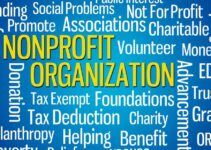Sustainable supply chain management plays a significant role in improving the ESG (environment, social, governance) score of the company. The score would impact the decision-making process of investors and customers. Today, we’ll discuss sustainable supply chain practices; its definition, types, and best practices with examples.
What is Sustainable Supply Chain Practices?
Sustainable supply chain practices are the methods and strategies focusing on delivering goods to the end consumer quickly and cheaply; while decreasing negative social and environmental impact through its process. It means that the company has to answer the global issues with their practices like the following;
- Fair labor wages
- Human rights
- Deforestation
- Waster security
- Climate change
Types of Sustainable SC Practices
Some of the main types of sustainable supply chain practices are as follows;
Social Sustainability
Social sustainability focuses on human rights issues through the value chain. A socially responsible organization collaborates with other businesses and companies that won’t employ forced or child labor. However, if the SC practices of the company don’t show concern about social sustainability, then it would jeopardize its brand image.
Environmental Sustainability
Environmental sustainability means that the company should have a lower carbon footprint and limited emission of GHG (greenhouse gases) in their SC process. The consumer goods contribute approximately 80% of the total GHG emission rate. However, the global population rate is increasing, and so is their consumption level; sustainable SC practices play a key role in decreasing the carbon footprint.
Economic & Financial Sustainability
Economic and financial sustainability means that the company should engage in sustainable SC practices and provide satisfactory income to all of its employees, investors, and owners.
Sustainable Supply Chain Practices with Examples
Some of the main sustainable supply chain practices with examples are as follows;
Optimized Transport
According to an estimate, transportation contributes approximately 30% of the GHG (greenhouse gas) emissions in the US. The focus of businesses and companies is to decrease their GHG gas emission rate by taking the following steps;
- Employing electric vehicles in the area where renewable sources of energy is available in majority
- Loading ships and trucks to the point in case of unavailability of space
- Distributing goods to the end consumer from the nearest warehouse or distribution facility
Many technological tools, equipment, and options would help you to decrease the carbon emission rate in transportation operations.
Example – 3D Software
The 3D truck loading software and application would help you to efficiently utilize your cargo spacing. The route and traffic optimization feature would make sure the lowest emission of GHG in the distribution process.
Sustainable Suppliers
Businesses and companies should conduct their operations in a socially and environmentally friendly way. In fact, they should collaborate and coordinate with sustainable suppliers and partners. Otherwise, it would jeopardize their brand reputation in terms of non-compliance with human rights and high GHG emission rate.
Example – Raw Supplies
Many companies from developed countries source raw supplies and other intermediary goods from the 3rd world countries. It is because of the low price in the absence of social and environmental regulations. The local companies in the developing countries would employ child labor to save costs; disposing of their chemicals in the rivers.
Some of the international standards that would help you to know whether your supplier or partner is responsible or not; are as follows;
- GRI (Global Reporting Initiative) 408 and 409
- SASB (Sustainable Accounting Standards Board) focuses on human capital practices like forced or child labor
- ISO 14001 measures the environmental practices of companies
Limited Inventory
According to an estimate, warehouses contribute approximately 13% of the total GHG emissions relevant to the supply chain. The large cemented warehousing structure of companies wastes a lot of energy (coal or green) because of heating, cooling, lighting, and others and they emit significant GHG. However, businesses carry inventory for two main reasons; find it difficult to estimate demand or employ them as distribution centers.
Example – Demand Forecasting Tools
There are various deep learning, analytical, and big data tools and models available that would help businesses and companies predict demand and manage their inventory efficiently.
Low Waste
The trash and waste of one company may serve as raw material for the other company. For instance, you can recycle the beverage bottles wasted from residences, bars, and hotels; and reuse those bottles again after recycling. Hotels and bars earn a small profit from the container deposit fee, but they decrease GHG emissions significantly due to efficiently managing waste disposal.
Example – Organic Fertilizer
A 19-year-old girl developed organic fertilizer from food waste, and it helps them to decrease wasted food and efficiently utilize the waste. Businesses and companies should find efficient methods to dispose of their waste.
Biodegradable Packaging
According to an estimate by the EU, roundabout 1% of the plastic used in the packaging is biodegradable. Products that cause GHG emissions are from petroleum-based materials, and their recycling rate is very low. However, biodegradable packaging material is a great option for companies to have sustainable supply chain methods.
Example – Coca Cola
Coca-Cola is the world’s leading soft drink manufacturing company. The company plans to achieve 50% of its packaging material recyclable and biodegradable by the end of 2030.
Conclusion: Sustainable Supply Chain Practices with Examples
After an in-depth study of the sustainable supply chain practices with examples; we have realized that sustainable SC practices are highly significant for your business growth. If you are learning about the business of sustainable SC practices, then you should keep in mind the abovementioned sustainable practices with real-life examples of companies.
References
Ahsan is an accomplished researcher and has a deep insight in worldly life affairs. He goes Live 3 days a week on various social media platforms. Other than research writing, he’s a very interesting person.


